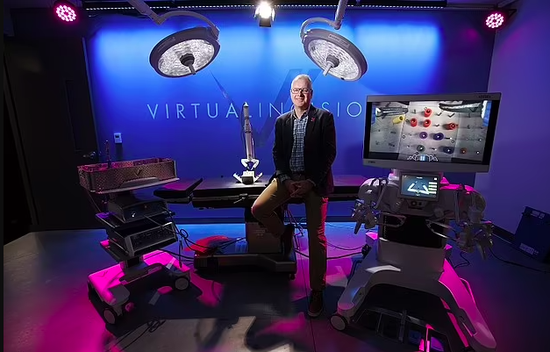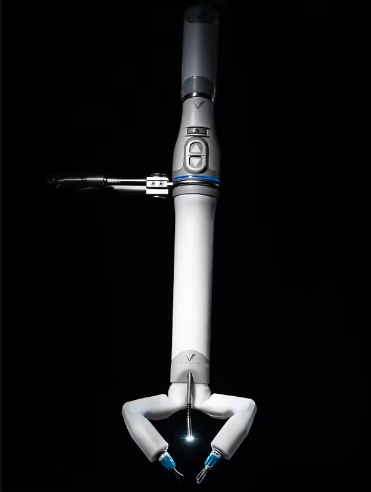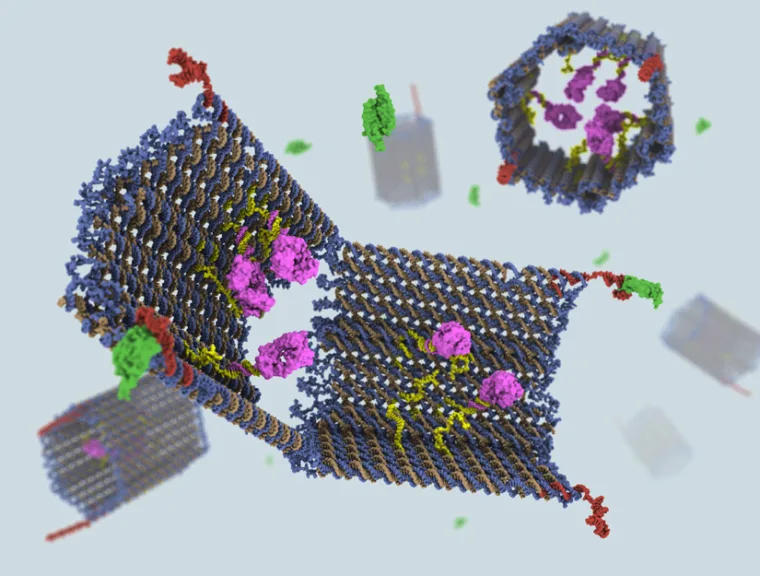With the support and sponsorship of NASA for several years, scientists in Nebraska, USA have successfully built this robot named “MIRA”, which means “small living robot assistant”. It will lift off to the International Space Station in 2024 to demonstrate its cutting capabilities with a simulated tissue.
Scientists say it could help astronauts repair a ruptured appendix on future Mars missions, or remove shrapnel from soldiers on distant battlefields.
The MIRA robot is the work of Shane Farett, a professor in the School of Engineering at the University of Nebraska-Lincoln. In April, NASA announced that it had awarded the university a $100,000 grant to get the robot ready for test missions in 2024.
 University of Nebraska engineering professor Shane Farett is the inventor of the MIRA robot
University of Nebraska engineering professor Shane Farett is the inventor of the MIRA robot
“NASA has been very supportive of this research for a long time. Our robot has the opportunity to board the International Space Station”
The MIRA robot weighs only two pounds (about 0.9 kg) and is a slender cylindrical shape with two movable manipulator arms at the bottom, each equipped with a mini version of the tool, one for grasping and the other for for cutting.
 The MIRA robot weighs only two pounds (about 0.9 kg) and is a slender cylindrical shape with two movable manipulator arms at the bottom, each equipped with a mini version of the tool, one for grasping and the other for for cutting. They will one day cut and grasp real human organs and tissues, but before that, years of research and testing will be required for safety reasons.
The MIRA robot weighs only two pounds (about 0.9 kg) and is a slender cylindrical shape with two movable manipulator arms at the bottom, each equipped with a mini version of the tool, one for grasping and the other for for cutting. They will one day cut and grasp real human organs and tissues, but before that, years of research and testing will be required for safety reasons.
They will one day cut and grip real human organs and tissues, but safety concerns will require years of research and development and testing before that.
Currently, the robot can insert surgical tools into the body through a single incision in the patient’s abdomen, and is controlled by the surgeon through a console on the side, but it could be automated in the future.
“As people travel farther and farther in space, surgery may be needed one day,” Professor Farit said. “We’re working hard to make that happen.”
Once aboard the International Space Station, MIRA will do its job independently, without the need for a doctor or astronaut to guide it. However, these operations will not use real human tissue. Instead, it will simulate various surgical maneuvers, such as cutting taut rubber bands, pushing metal rings strung on wires, and more, in a microwave-sized lab box.
But according to Professor Farit’s estimate, MIRA will take another 50 to 100 years to operate independently. The goal of the 2024 test is not the robot’s level of automation, but to fine-tune the robot’s ability to operate in a zero-gravity environment.
As programmed, the device can be tested independently, thereby reducing the use of communication bandwidth on the space station and minimizing the time astronauts spend on the experiment.
“The astronaut only needs to turn on the switch, and the robot will start the experiment by itself. After two hours, the astronaut can turn the switch off again.”
Professor Farit and Rachel Wagner, an engineering graduate student at the school, will work together next year to complete the final pre-launch work, by writing software to allow MIRA to operate in the space station’s experimental box; in addition, there will be a lot of work on the device. Extreme testing to make sure it survives launch and works as intended in space.
The surgical performance of MIRA has been proven on the ground. In a previous experiment, former NASA astronaut Clayton Anderson tried the robot at the Johnson Space Center in Houston, guiding MIRA through a series of operations that mimicked surgery in an operating room.
Farett and colleagues have been developing MIRA for nearly 20 years. In 2006, he co-founded Virtual Incision with a partner, which launched the MIRA project. Since its inception, the company has attracted more than $100 million in venture capital funding.



GIPHY App Key not set. Please check settings